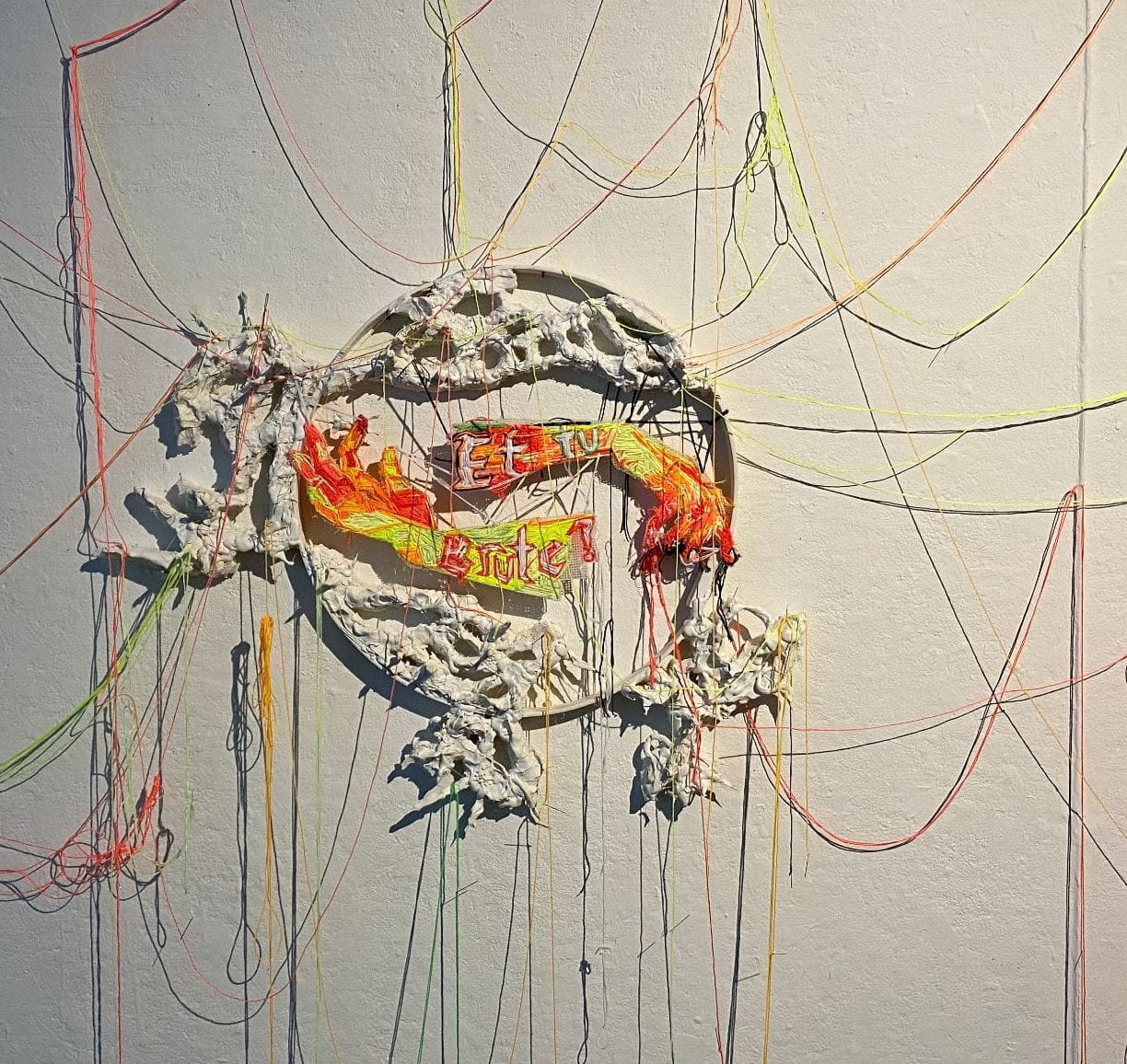Artists Madeline Moser and Julia Vreeman have work in the gallery through Friday.
Really fantastic, moving work. Come see it now!
Statement:
Et Tu
Julia Vreeman
Embroidery, clay, Wood, mixed-media
This work is focused on themes of betrayal of self, forgiveness, and letting go. The piece intends to explore grief as a process of struggle prior to acceptance. The phrase “Et Tu Brutus” was famously uttered as Ceasar died realizing his closest friend Brutus was among his assassins. The suffocating feeling of betrayal is personified through the small clay branches extending from the center of the work. These branches are modeled from the Strangler fig, a deadly variety of tree which kills all other vegetation it encounters.
The viewer is intended to search for one of the small nails affixed one of the hanging strings. Upon finding a nail, the viewer is encouraged to think of a person, intrusive thought, or self-limiting belief and cut the string above the nail. In doing so, the nail will fall to the floor. In this experience, the viewer recons with one’s own experiences with limitation. Thus, the process of letting go can begin. The piece is based on the therapeutic practice of a cord-cutting ceremony.
Statement:
6 Weeks, Madeline Moser. Assisted by Keaton Bruce. Video projection, twine, wood, linen, paint
6 Weeks is a documentation of the loss of bodily autonomy caused by the “Heartbeat Bill” that the Texas legislature passed in May of 2021 and will be enforced in September of 2021. The “Heartbeat Bill” restricts all abortions once a fetal heartbeat is detected, which can happen as early as six weeks past conception. This bill was co-signed by nearly every Republican senator and more than 60 members of the House of Representatives, most of whom are not able to bear a child. This bill essentially puts a ban on all of abortions as most menstral cycles run from anywhere to 4-6 weeks long. This bill completely restricts the rights of people who are able to get pregnant, taking away their choice and bodily autonomy and places the state on a pedestal of control. 6 weeks is a cataloguing of the grief over this loss of bodily autonomy as well as an illustration of the restrictions placed on the womb. In the video displayed, the artist is being wrapped in red twine, symbolizing the constriction she feels has historically been placed on the womb and the bodies of those whose bodies hold a womb. The color red has always held significance within the lives of those who have a uterus as it marks the coming of a menstrual cycle. This color can often be a sign of relief but has historically been used to establish a detrimental gender hierarchy. The physical restriction of the video by the twine further establishes this regulation of bodily autonomy. The viewer is restricted from making a choice about whether they want to closer view the art, the art being unreachable from a physical and partially a visual point of view. This interaction allows for the art to be “singularly experienced in the here-and-now through the bodily presence of each viewing subject, in a sensorial immediacy of spatial extension and temporal duration”1 , giving the viewer a direct look into the emotions of the artist as she processes the cyclical, and now legislative, restrictions placed on her body and those that are similar to hers.
1 Kwon, Miwon. “One Place after Another: Notes on Site Specificity.” October, vol. 80, 1997, p. 86., doi:10.2307/778809.


